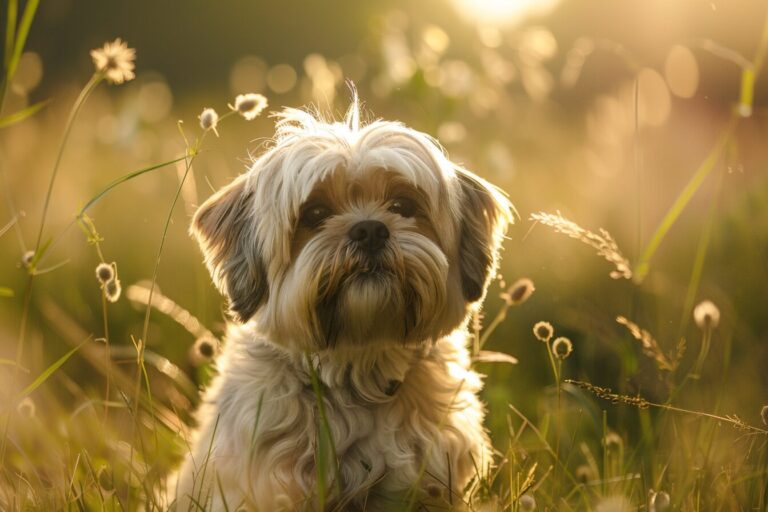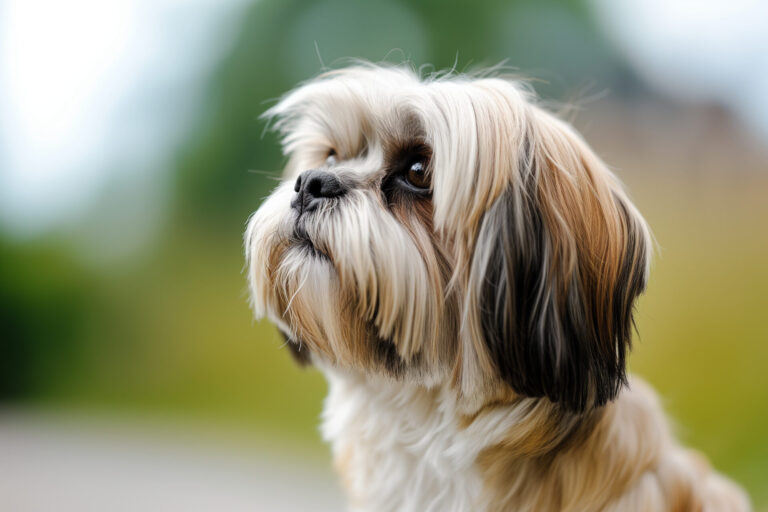Lhasa Apsos are an ancient dog breed originating from Tibet, where they were revered for their keen senses, intelligence, and bravery. They’ve also been long known as a breed that has a beautifully long coat of hair.
That might have you pondering, but with that lovely coat, what about my allergies?! If you are considering getting a Lhasa Apso and are wondering whether they are hypoallergenic, this article will help you understand the unique characteristics of this breed and how they may impact allergies.
It’s worth noting that there is actually some degree of debate over whether Lhasa Apsos should be classified as hypoallergenic. While they are not necessarily considered as hypoallergenic as some other breeds, there are a few people with allergies who have reported being able to live comfortably with Lhasa Apsos. As we discuss later, if you’re prone to allergies, spending time with the breed before getting one may be the most important thing you can do.
There is no universally accepted definition of what qualifies a dog as hypoallergenic.
Now, let’s discuss some of the key points to consider in more detail…
Lhasa Apso coat type
One of the most notable physical features of the Lhasa Apso is their long, luxurious coat. Their hair can grow up to six inches long, and is soft, silky, and flowing. This coat was an important part of the breed’s natural protection against the harsh mountain climate of Tibet.
However, this luxurious coat can also be a source of allergens for some people. As we said, Lhasa Apsos are not hypoallergenic, as they still shed their hair and dander. However, there are a few factors that can make them a better choice for those with allergies than some other breeds.
Double coat of hair
Lhasa Apsos have a double coat, consisting of a long, coarse outer coat and a softer undercoat. While their double coat may cause allergic reactions in some individuals, regular grooming and maintenance can help minimise the amount of hair and dander they shed. While Lhasa Apsos are not considered hypoallergenic, their overall cleanliness and minimal shedding can make them a better choice for allergy sufferers than some other breeds.
Regular grooming
To keep their coats healthy and free of matting, Lhasa Apsos require regular grooming. This includes brushing and combing their hair daily, as well as occasional baths. By keeping their coats clean and well-maintained, you can reduce the amount of hair and dander that they shed, which can help minimise the potential for allergic reactions.
Overall health
Another important factor to consider when discussing allergies and Lhasa Apsos is their overall health. Just like any other breed of dog, Lhasa Apsos require regular veterinary care to maintain their health.
Vaccinations and preventative care
You should always ensure that your dog’s vaccinations are up to date. Preventative care is important factor in helping to reduce the risk of illnesses that may affect their skin or coat. By keeping your dog in good health, you can minimise the risk of allergic reactions caused by secondary issues like skin infections or parasites.
Treatment for medical conditions
In addition, Lhasa Apsos may be prone to certain medical conditions that can affect their skin and coat. These include allergies, skin irritations, or autoimmune disorders. Make sure you always contact your vet if you have any concerns, so that issues can be treated promptly.
Considerations for people with allergies
If you or a family member has allergies and are considering getting a Lhasa Apso, there are a few things to keep in mind.
Spend time with the breed
First, it is important to spend some time with the breed before making a final decision. This can give you an idea of whether you have an allergic reaction to their hair or dander. It is important to keep in mind that every individual’s allergies may vary, and what works for one person may not work for another.
Regular cleaning and maintenance
Secondly, if you do decide to get a Lhasa Apso, you should plan on regular cleaning and maintenance to keep their coat and skin looking healthy. This might include:
- Brushing and combing their hair daily (Lhasa Apsos need this in particular!)
- Giving them occasional baths to keep their coat clean
- When you do give them a bath, make sure you prompt dry and brush them to avoid matting
- Make sure there are regular visits to the veterinarian (have plenty of treats ready!)
Allergy medications
Thirdly, if you or a family member has allergies, consider taking allergy medications to help control your symptoms. Antihistamines, decongestants, and nasal corticosteroids can be effective in reducing allergy symptoms. However, always consult with your doctor before starting any new medication.
Other breeds to consider
Finally, if you are still concerned about allergies, there are a few other breeds that are considered more hypoallergenic than Lhasa Apsos. These include:
- Poodles
- Bichon Frises
- Portuguese Water Dogs
These breeds all have single coats of hair, which means they shed less than some other breeds. However, they still require regular grooming and maintenance to keep their coats healthy.
Conclusion
Lhasa Apsos are not considered hypoallergenic in the technical sense, as they actually do shed hair and dander. However, they might still be a better choice for people with allergies than other breeds as they tend to shed less hair and dander.
It’s important to bear in mind that there is no such thing as a completely hypoallergenic dog, and people with severe allergies may still experience symptoms around Lhasa Apsos. Ultimately, whether a Lhasa Apso is right for you depends on your individual allergies and tolerance level. It’s always best to spend time around the breed before making a decision to ensure you’re comfortable with their shedding and dander levels.
If you or a family member has allergies and are considering getting a Lhasa Apso, you should try to spend time with one before making a final decision. Additionally, regular grooming and veterinary care can help reduce the amount of hair and dander that they shed.




Leave a Comment